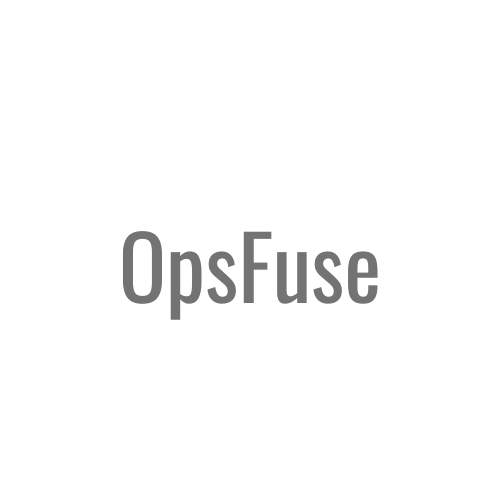

When building CI/CD pipelines to achieve faster and more reliable software delivery, it is crucial not to overlook the security aspect. Security must be incorporated into the pipeline right from the beginning. Neglecting to include security in CI/CD puts you at risk of leaving your application unsecured or attempting to manage security as a separate process.
Today, best practices integrate security controls earlier in the SDLC, known as “shift security.” Shifting left involves implementing security checks in every layer of the CI/CD pipeline, enabling more accurate threat detection at every step. By implementing practices such as vulnerability scanning of container images, enforcing security policies with Binary Authorization, and enabling the deployment of approved and trusted images on Google Kubernetes Engine (GKE), you can enhance the security of your CI/CD pipelines.
This blog post highlights the tools available to construct a secure CI/CD pipeline using Google Cloud’s built-in services.
Artifact and Container Analysis is a valuable solution that offers vulnerability scanning and metadata storage specifically for containers. This scanning service conducts vulnerability scans on images stored in Artifact Registry and Container Registry.
Binary Authorization is a deploy-time security control that ensures only trusted container images are deployed on Google Kubernetes Engine (GKE) or Cloud Run.
Google Cloud Platform (GCP) mandates specific security measures to ensure the robustness of your CI/CD pipeline Conditional IAM Policies, Strong Password Policies and Rotation, Principle of Least Privilege and Multi-Factor Authentication (MFA)
To uphold a secure CI/CD pipeline, it is essential to maintain continuous monitoring and auditing. You can achieve this by leveraging tools like Cloud Audit Logs and Cloud Monitoring offered by GCP
The demand for rapid development and delivery in CI/CD pipelines has led to an increased reliance on open-source, third-party integrations. However, some teams may import these integrations into the deployment environment without adequately scanning the source code for potential security vulnerabilities. Consequently, such integrations can introduce vulnerabilities into the CI/CD pipeline.
Employing a vulnerability scanning solution is essential to assess the security of application code, environment configurations, and deployment scripts. These scanning and monitoring tools should be implemented throughout the entire Software Development Life Cycle (SDLC) to promptly identify and address vulnerabilities, thus preventing potential exploits.
Artifact and Container Analysis is a valuable solution that offers vulnerability scanning and metadata storage specifically for containers. This scanning service conducts vulnerability scans on images stored in Artifact Registry and Container Registry. Subsequently, it stores the resulting metadata, containing essential information about the identified vulnerabilities, and makes it easily accessible through an API for further analysis and consumption.
Binary Authorization is a deploy-time security control that ensures only trusted container images are deployed on Google Kubernetes Engine (GKE) or Cloud Run. With Binary Authorization, images needs to be signed by trusted authorities during the development process and then enforce signature validation when deploying.
By enforcing validation, you can gain tighter control over your container environment by ensuring only verified images are integrated into the build-and-release process.
Google Cloud Platform (GCP) mandates specific security measures to ensure the robustness of your CI/CD pipeline. To enhance security and mitigate risks, it is recommended to adhere to the following IAM best practices:
Conditional IAM Policies: Implement conditional IAM policies to enable precise access control based on specific conditions. This approach allows for fine-grained control over permissions, ensuring that access is granted only when certain criteria are met.
Strong Password Policies and Rotation: Enforce strong password policies and implement regular password rotation for IAM accounts. By setting stringent password requirements and periodically changing passwords, the risk of unauthorized access can be minimized.
Principle of Least Privilege: Apply the principle of least privilege to limit access rights to the bare minimum necessary for each user or service account. By granting only the required permissions, you reduce the potential attack surface and mitigate the impact of compromised accounts.
Multi-Factor Authentication (MFA): Enable Multi-Factor Authentication (MFA) for user accounts accessing GCP resources. MFA adds an extra layer of security by requiring users to provide additional verification, such as a time-based one-time password (TOTP) or a hardware token, along with their regular credentials. This significantly reduces the risk of unauthorized access, even if passwords are compromised.
By implementing these IAM practices, you can bolster the security of your CI/CD pipeline on GCP, ensuring that access is tightly controlled, passwords are robust, and an additional layer of authentication is in place, thereby mitigating the risk of unauthorized access.
To uphold a secure CI/CD pipeline, it is essential to maintain continuous monitoring and auditing. You can achieve this by leveraging tools like Cloud Audit Logs and Cloud Monitoring offered by GCP. Follow these best practices:
Regular Audit Log Review: Perform regular reviews of audit logs to identify any suspicious activities, unauthorized access attempts, or misconfigurations. Analyzing the logs helps in detecting potential security threats or breaches.
Proactive CI/CD Pipeline Monitoring: Implement proactive monitoring for your CI/CD pipeline to swiftly respond to potential security incidents. By continuously monitoring key metrics and activities, you can identify anomalies or deviations from normal behavior, enabling you to take immediate action.
Real-Time Alerting: Set up automated alerts based on predefined security rules and anomalies. These alerts promptly notify you of any potential security incidents, ensuring a quick response. By configuring real-time alerts, you can effectively detect and mitigate security risks in a timely manner.
During our exploration, we have discovered that Google Cloud provides various built-in services that can enhance the security of a CI/CD pipeline. These services offer robust features and capabilities to strengthen the overall security posture.
Furthermore, it is important to highlight that all of these services used to construct and safeguard CI/CD pipelines are serverless. This characteristic brings notable advantages, as it enables the rapid deployment of the entire infrastructure within a few minutes. This alleviates concerns about ongoing maintenance and management tasks, allowing your teams to redirect their focus towards accelerating software development and release cycles. Consequently, this approach facilitates faster, more reliable, and cost-efficient operations.
